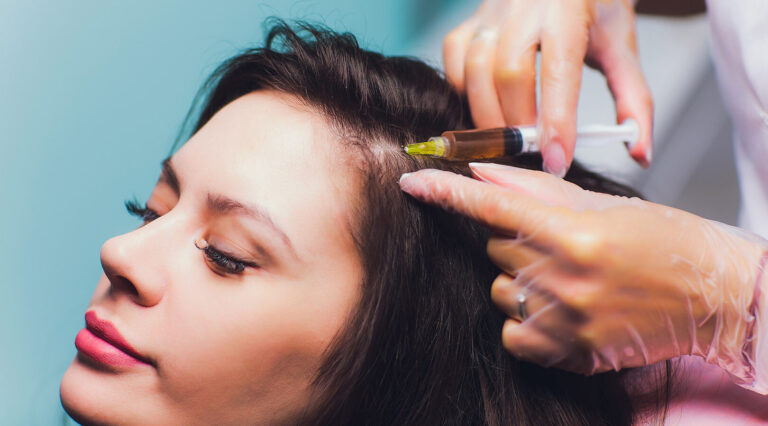When exploring cosmetic enhancement options, a common question arises: What is the cost difference between Botox and fillers? Although both are popular injectables used to reduce the appearance of aging, they serve different purposes and involve different application techniques. While pricing specifics can vary based on several factors, understanding the value each treatment offers and how they differ in usage, longevity, and treatment goals is essential for making a well-informed decision.
The Importance of Choosing the Right Treatment:
Both Botox Injections(حقن البوتوكس) and dermal fillers play an important role in modern facial rejuvenation. Botox is typically used to reduce dynamic wrinkles—those caused by muscle movement—such as forehead lines, frown lines, and crow’s feet. It works by relaxing the muscles temporarily, resulting in smoother skin.
Dermal fillers, on the other hand, are designed to restore volume, smooth out static wrinkles, and enhance facial contours. Commonly used in areas like the cheeks, lips, jawline, and nasolabial folds, fillers can help lift and plump the skin, offering a more youthful and refreshed look. Choosing between Botox and fillers—or combining both—depends largely on individual facial anatomy and aesthetic goals.
Key Differences Between Botox and Fillers:
Understanding the fundamental differences between these two treatments can provide clarity when comparing their applications and expected results.
Botox
-
Treats dynamic wrinkles caused by muscle activity
-
Commonly used in the upper face (forehead, brow, eyes)
-
Results last approximately 3 to 4 months
-
Works by temporarily relaxing muscle activity
Fillers
-
Address volume loss and static wrinkles
-
Often used in mid-to-lower face areas like cheeks, lips, and smile lines
-
Results can last from 6 months up to 2 years depending on the type
-
Composed of hyaluronic acid or other biocompatible substances
Because the goals and mechanisms are different, the treatment plan and product selection are tailored to the individual’s needs, not just based on budget or cost.
Risks and Considerations for Each Treatment:
Though both treatments are minimally invasive and generally safe, they do carry individual risks that users should understand before proceeding.
Botox Risks
-
Temporary muscle weakness or drooping in the treated area
-
Asymmetry if injected unevenly
-
Minor bruising or swelling at the injection site
Filler Risks
-
Swelling, tenderness, or bruising post-injection
-
Lumps or uneven texture if improperly injected
-
Rare complications like vascular occlusion
Choosing the right treatment involves more than comparing affordability—it also involves understanding your anatomy, expected outcomes, and how each option interacts with the natural aging process.
Benefits of Botox and Fillers:
Despite their differences, both Botox Injections treatment(علاج حقن البوتوكس) and fillers offer a range of benefits that make them ideal for those looking to refresh their appearance without surgery.
Botox Benefits
-
Smoother expression lines for a more relaxed appearance
-
Prevents deepening of dynamic wrinkles over time
-
Quick treatment with minimal downtime
Filler Benefits
-
Restores facial volume and enhances contour
-
Offers visible lifting and plumping effects
-
Long-lasting results depending on the product used
In many cases, these treatments are combined to achieve a more comprehensive rejuvenation, known as a “liquid facelift.” This synergy allows for the reduction of wrinkles along with the restoration of youthful volume in key areas of the face.
Frequently Asked Questions:
Is one treatment more cost-effective than the other?
That depends on the treatment area and goals. Botox may be more effective for expression lines, while fillers are better for volume-related aging. Their longevity also plays a role in long-term value.
Can Botox and fillers be done together?
Yes, they are often used in combination for optimal results. Botox smooths wrinkles, while fillers add volume, creating a balanced and youthful appearance.
Do results appear immediately?
Botox results typically take 3 to 7 days to appear, while fillers often show immediate improvement with continued enhancement over a few days.
Which treatment lasts longer?
Fillers usually last longer than Botox, with results ranging from 6 months to 2 years depending on the filler type and area treated.
Are maintenance sessions required?
Yes, both treatments require maintenance to sustain results. Frequency depends on the product used, area treated, and how an individual’s body metabolizes the product.
Conclusion:
So, what is the cost difference between Botox and fillers? While each has its own pricing structure influenced by usage and longevity, the real distinction lies in their purpose and results. Botox is ideal for smoothing dynamic wrinkles, while fillers restore lost volume and shape. Rather than focusing solely on cost, it’s important to consider which treatment—or combination—aligns with your aesthetic goals. Understanding how these options differ empowers you to make confident decisions on your journey to facial rejuvenation.




